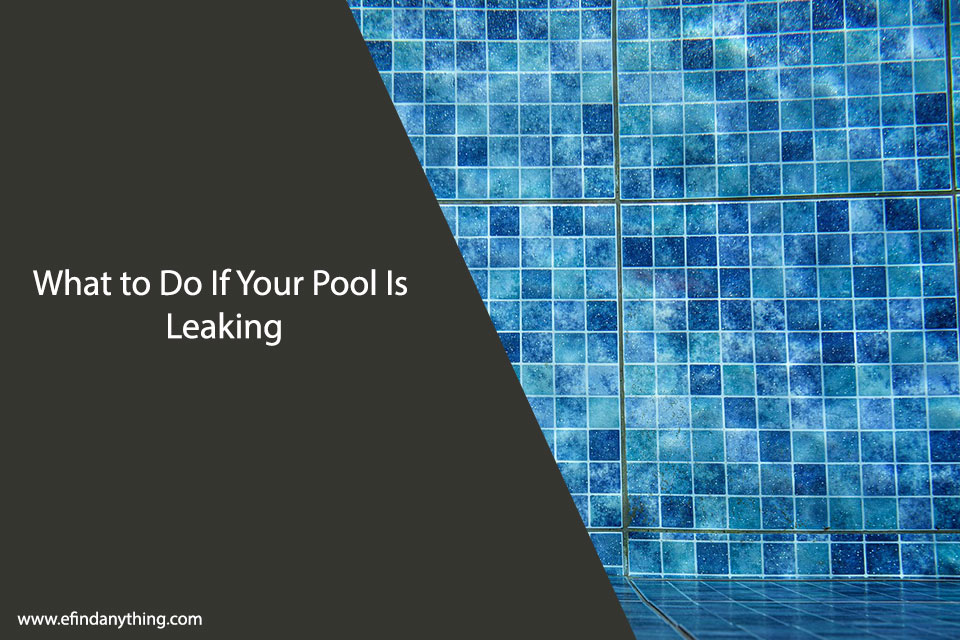
A leaking pool is more than just an inconvenience—it can waste thousands of gallons of water, drive up utility bills, throw your chemical balance out of order, and even cause structural damage to your pool and surrounding property. The problem is, leaks aren’t always obvious. Some are slow and hidden, while others are large enough to drop your water level noticeably within days. Whether you’ve discovered a clear sign of a leak or you only suspect one, knowing how to respond quickly can save you time, money, and frustration.
Here’s a step-by-step guide on what to do if you think your pool might be leaking.
Confirm That You Have a Leak
Before assuming the worst, it’s important to determine whether you’re dealing with an actual leak or normal evaporation. Pools lose water naturally due to heat, sun exposure, wind, and splash-out during use. In warmer climates, evaporation rates can be as much as a quarter to half an inch of water per day.
One simple way to check is by performing the bucket test:
- Fill a bucket with pool water and place it on the pool step so the water level inside matches the water level outside.
- Mark both water lines.
- Leave the bucket in place for 24 hours without using the pool.
- Compare the water levels. If the pool’s water level has dropped more than the water inside the bucket, you may have a leak.
If the results point toward water loss beyond normal evaporation, it’s time to investigate further.
Look for Visible Clues
While some leaks are hidden underground, others leave visible signs. Walk around your pool and inspect the following:
- Pool shell and tile line: Look for cracks, gaps in the grout, or damaged plaster.
- Fittings and equipment: Check the areas around return jets, lights, skimmers, and drains for signs of wear or looseness.
- Surrounding area: Watch for damp spots or pooling water near the deck, landscaping, or equipment pad.
- Water features: If you have waterfalls, fountains, or attached spas, inspect these areas for leaks in their plumbing or seals.
Document anything suspicious—photos and notes can help when you speak with a repair technician.
Check the Equipment
Sometimes leaks are caused by problems in the filtration or circulation system. With the pump running, inspect your equipment pad for water pooling under the pump, filter, or heater. Check all connections, unions, and valves for drips or moisture.
If the leak seems to occur only when the pump is running, it may point to a pressure-side plumbing issue. If it happens when the pump is off, a suction-side leak may be to blame. While these distinctions can help narrow the search, confirming and repairing the leak is best left to a professional.
Monitor the Rate of Water Loss
Knowing how quickly your pool is losing water can help diagnose the severity of the leak. Use your skimmer opening or a marked point on the tile as a reference, and measure the drop over a 24-hour period. Significant loss—more than an inch per day—indicates a larger problem that should be addressed immediately.
Call a Professional Leak Detection Service
While DIY checks are useful for confirming a leak, finding the exact location requires specialized tools and expertise. Professional leak detection services like Florida Leak Locators use techniques like pressure testing, electronic listening devices, and dye testing to pinpoint the source without unnecessary damage to your pool or surrounding area.
These services can identify:
- Structural cracks in the pool shell
- Failing seals or gaskets around fittings
- Leaks in underground plumbing lines
- Damage around skimmers, lights, or drains
The advantage of professional detection is precision—you’ll know exactly where the leak is and how to fix it, saving both time and money compared to trial-and-error repairs.
Plan for the Repair
Once the leak is located, your repair approach will depend on the cause:
- Small cracks in plaster or tile grout: These may be sealed with underwater epoxy or other patching materials.
- Worn gaskets and seals: Replacing these can stop leaks around fittings, lights, or drains.
- Damaged plumbing lines: This may require digging to replace or reroute sections of pipe.
- Structural damage: Large cracks or compromised pool shells might require resurfacing or more extensive restoration work.
Some repairs can be completed the same day the leak is found, while others may require scheduling a follow-up visit. Always work with licensed, insured pool repair specialists to ensure the job is done correctly and to code.
Refill and Rebalance the Pool
After the leak is fixed, refill your pool to the proper level. Because water has been lost and replaced, your chemical levels will likely be out of balance. Test and adjust pH, chlorine, alkalinity, and calcium hardness to ensure the water is safe and comfortable for swimming.
This is also a good time to clean the filter and check that the pump and other equipment are functioning properly after the repair.
Prevent Future Leaks
While not all leaks can be avoided, proper maintenance can reduce the risk. Here are a few preventative tips:
- Inspect regularly: Walk around your pool weekly to check for cracks, loose fittings, or unusual damp spots.
- Maintain proper chemical balance: Poor water chemistry can accelerate wear on the pool surface and equipment.
- Service equipment routinely: Keep pumps, filters, and heaters in good working order to avoid leaks caused by component failure.
- Schedule periodic professional inspections: Annual or semi-annual checkups, including leak detection, can catch small issues before they become costly problems.
Why Acting Quickly Matters
The longer a leak goes unchecked, the more damage it can cause. Escaping water can erode the soil beneath your pool and deck, leading to settling, cracks, and even structural failure. It can also damage nearby landscaping, flood equipment areas, and contribute to mold or mildew growth.
From a financial perspective, the cost of wasted water, lost chemicals, and increased energy use from overworked pumps can add up quickly. Addressing a leak promptly is far less expensive than repairing major damage later.
Enjoy Peace of Mind
A well-maintained, leak-free pool is a source of enjoyment, not stress. If you suspect your pool is leaking, taking a systematic approach—confirming the leak, checking for visible signs, involving a professional, and completing the repair—will get you back to swimming sooner and help protect your investment.
When in doubt, bring in an experienced leak detection service. Their expertise, combined with the right tools, can quickly identify and solve the problem, leaving you free to enjoy your pool without watching the water level drop day by day.
